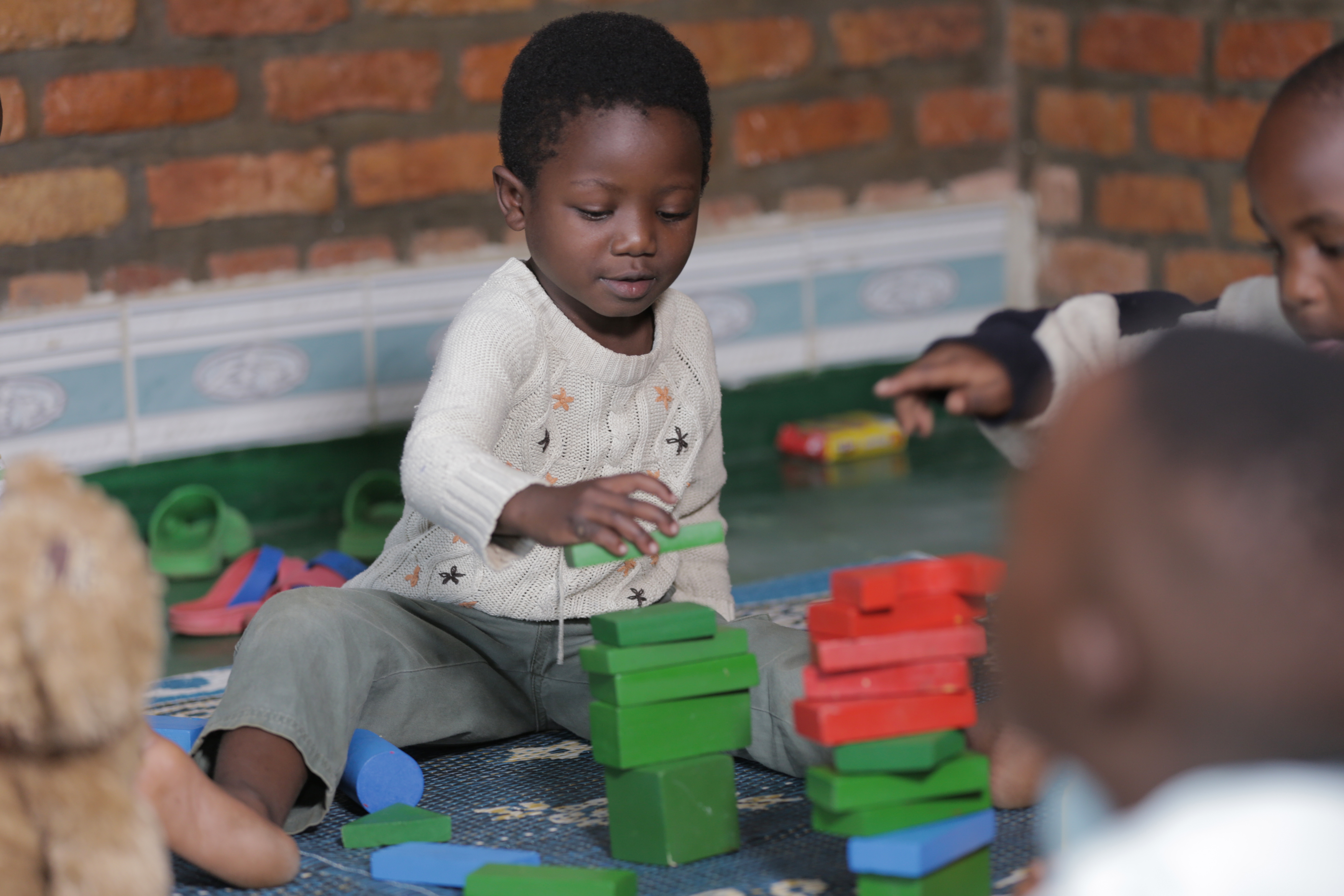Home environment
Wealth is associated with richer home learning environments for young children
A young child’s home environment plays a key role in determining his or her chances for survival and development.[1] Optimal conditions include a safe and well-organized physical environment, opportunities for children to play, explore and discover, and the presence of developmentally appropriate objects, toys and books.[2] Several research studies suggest that children who grow up in households where books are available receive, on average, three more years of schooling than children from homes with no books. This finding holds regardless of a caregiver’s level of education, occupation or class and applies to rich and poor countries alike.[3] However, in three key indicators of a nurturing and supportive home environment, children from the richest wealth quintile fare far better than those from the poorest quintile.
The availability of children’s books in the home varies widely across countries – from 91 per cent in Belarus and Ukraine to less than 1 per cent in Burundi, Central African Republic, Guinea and Mali. The likelihood that a child will have access to books in the home is strongly associated with household wealth. Children from the poorest quintile tend to have fewer books than those in the richest quintile in almost every country with available data.
Within the home, caregivers are tasked with establishing a safe, stimulating and nurturing environment and providing direction and guidance in daily life. Interactions with responsible caregivers who are sensitive and responsive to children’s emerging abilities are central to social, emotional and cognitive development.[4] This type of nurturing care can help children feel valued and accepted, promote healthy reactions, provide a model for acceptable social relationships, and contribute to later academic and employment success.[5]
Learning activities that foster cognitive development and stimulate curiosity include reading, telling stories and naming, counting and drawing. Children’s socio-emotional development is facilitated by the involvement of parents and other caregivers in activities such as playing and singing. Play has been emphasized as a particularly important aspect of children’s lives since it helps stimulate children’s minds and bodies. It also gives them an opportunity to practise social roles and learn about aspects of their culture and environment.[6]
Levels of early stimulation and responsive care are generally quite high in all countries with available data, with the exception of 30 countries where fewer than half of young children receive the benefits of engagement in activities that promote and support early learning. Again, the data show disparities by household wealth.
Proper supervision helps protect children from physical and emotional harm. In the absence of good-quality child care (either organized or informal), children are sometimes left home alone to care for themselves and/or their siblings.[7] Leaving a child alone or in the care of another child can expose him or her to increased risk of not only injury, but also abuse and neglect.
The proportions of children left with inadequate supervision vary widely across countries. However, in most countries, the poorest children are much more apt to be left alone or in the care of another child.
References
[1] Belsky, Jay, et al., ‘Socioeconomic Risk, Parenting During the Preschool Years and Child Health Age 6 Years’, European Journal of Public Health, vol. 17, no. 5, 14 December 2006, pp. 511–512.
[2] Dobrova-Krol, Natasha A., et al., ‘Effects of Perinatal HIV Infection and Early Institutional Rearing on Physical and Cognitive Development of Children in Ukraine’, Child Development, vol. 81, no. 1, January/February 2010, pp. 237–251.
[3] Evans, Mariah D.R., et al., ‘Family Scholarly Culture and Educational Success: Books and schooling in 27 nations’, Research in Social Stratification and Mobility, vol. 28, no. 2, June 2010, pp. 171–197.
[4] Maggi, Stefania, et al., ‘Knowledge Network for Early Childhood Development: Analytic and strategic review paper. International perspectives on early childhood development’, Human Early Learning Partnership, University of British Columbia for the World Health Organization’s Commission on the Social Determinants of Health, December 2005, pp. 7–8, 10–13.
[5] Engle, Patrice L., et al., ‘Child Development in Developing Countries 3: Strategies to avoid the loss of developmental potential in more than 200 million children in the developing world’, Lancet, vol. 369, 2007, pp. 229─242.
[6] Viola, Makame, A Rapid Assessment of Child Rearing Practices Likely to Affect a Child’s Emotional, Psychosocial and Psychomotor Development: A case study of Kibaha District, Coast Region ─ Tanzania, UNICEF, December 2001.
[7] Sigurdsen, P., S. Berger and J. Heymann, ‘The Effects of Economic Crises on Families Caring for Children: Understanding and reducing long-term consequences’, Development Policy Review, vol. 29, no. 5, 2011, pp. 547─564.
Early childhood development – home environment data
Build and download your own customisable dataset
Resources



Notes on the data
Data sources
Multiple Indicator Cluster Surveys (MICS) are the main sources for nationally representative and comparable data on early childhood development. Some Demographic and Health Surveys (DHS) and other national household surveys have also collected information on early childhood development, typically with the standard, or modified, versions of the MICS questionnaire.
Main indicators
Beginning with the fourth round of MICS (MICS4), the early childhood development indicators were consolidated into a single early childhood development module included in the questionnaire for children under 5 years of age.[8] The module is administered to mothers or primary caregivers of children under the age of 5 (0 to 59 months).
Early childhood development indicators capture the availability/variety of learning materials in the home, adult and paternal support for learning and school readiness, and non-adult care. Learning materials include both books and play materials defined as household objects, objects found outside (such as sticks, rocks, shells, etc.), home-made toys and manufactured toys. Activities that promote learning and school readiness include: reading books to the child; telling stories to the child; singing songs to the child; taking the child outside the home; playing with the child; and naming, counting or drawing things with the child.
Learning materials:
- Percentage of children under 5 who have three or more children’s books.
- Percentage of children under 5 with two or more playthings.
Support for learning:
- Percentage of children aged 36─59 months with whom an adult has engaged in four or more activities to promote learning and school readiness in the past three days.
- Percentage of children aged 36—59 months whose father has engaged in four or more activities to promote learning and school readiness in the past three days.
Inadequate supervision:
- Percentage of children under 5 left alone or in the care of another child younger than 10 years of age for more than one hour at least once in the past week.
MICS module on early childhood development
MICS surveys have a standardized module on early childhood development.
Download the MICS module on early childhood development (PDF)
References
[8] Indicator definitions in the third round of MICS (MICS3) differed for some early childhood development indicators. For example, the age group for the two indicators on support for learning (adult and father’s engagement) was children under age 5. As such, data on some of the indicators from MICS3 are not directly comparable with data collected in subsequent rounds of MICS for any given country.